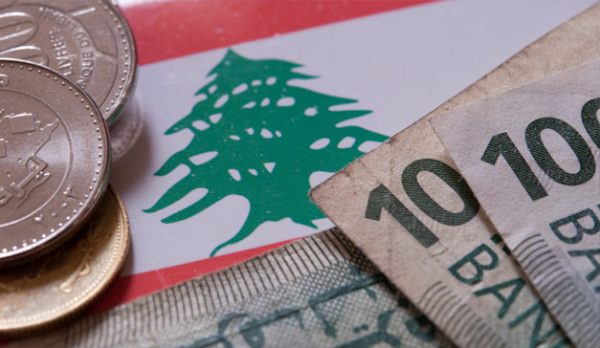 By Sujata Rao, Lisa Barrington
By Sujata Rao, Lisa Barrington
LONDON/BEIRUT- With fixed exchange rates and some of the world’s worst debt and balance-of-payment ratios, Lebanon risks serious economic crisis next year should worsening relations with Gulf states choke off the capital flows sustaining its currency’s dollar peg.
Lebanon’s ability to dodge financial disaster has for years confounded critics, whose warnings of debt defaults, balance of payments crises and a collapse of the pound currency, have all come to nought.
What could change that equation is the foreign policy shift in Saudi Arabia, whose new Crown Prince Mohammed bin Salman has thrust Beirut back into a regional power struggle between the Sunni monarchy in Riyadh and Shi‘ite Iran.
One sign of the shifting political sands was the shock resignation last month of Prime Minister Saad al-Hariri, widely seen as under pressure from Saudi Arabia – which along with its Gulf allies opposes the Iran-backed group Hezbollah’s role in Hariri’s coalition government.
Hariri has since rescinded his resignation. But the tumult has re-focused the attention of many economists and analysts on the frailties of an economy reliant on remittances, an external funding deficit of about 20 percent of gross domestic product and government debt of 150 percent of GDP, according to the IMF.
These metrics are far worse than in other countries with the same B-rating from Fitch.
The point around which all this could unravel is Lebanon’s currency, which is pegged at a rate of 1,500 per dollar.
While most developing countries have now adopted floating currencies, pegs remain the norm in the Middle East. But Lebanon’s currency peg, unlike those of oil-rich Gulf states, is not backed by huge financial firepower.
Instead, the country relies on deposit inflows to Lebanese banks from its diaspora, which vastly outnumbers the 4 million Lebanese at home, to fund the government and maintain central bank defences.
“The crisis is behind us for a while but in the medium term, Lebanon has difficult macro fundamentals as it needs to keep attracting deposits to sustain the currency peg,” said Jean-Michel Saliba, a strategist at Bank of America Merrill Lynch.
“Lebanon has been resilient for a very long time but that doesn’t mean the resilience will last.”
With a pegged currency, authorities must hold sufficient dollar buffers to maintain faith in the exchange rate, while ensuring steady inflows to keep coffers topped up.
During November’s turmoil, some Lebanese rushed for dollars; data shows central bank foreign assets fell by $1.6 billion last month, with traders citing interventions to support the pound.

Governor Riad Salameh, in office since 1993, declined to comment on the matter of interventions. But he told Reuters the peg had a “cost”.
Salameh has a comfortable $43 billion in reserves. He can also point to how the central bank maintained stability in other crises, including the 2006 conflict with Israel, the assassination of former Prime Minister Rafik al-Hariri and Syria’s civil war.
The reliance on overseas citizens is a strength as well as weakness.
On one hand, diaspora money is known to be “stickier” than foreign stock and bond investments. The downside is that remittances comprise 16 percent of Lebanon’s GDP, according to World Bank data, well above most emerging economies.
What’s more, around two-thirds of this comes from the Gulf and could be at risk from tensions between Beirut and Riyadh. Hariri has identified Gulf sanctions as a major threat.
“They have enough reserves but those are being fed by remittance inflows. If things get worse in the Middle East, you don’t know if this money will still come in,” said Societe Generale strategist Regis Chatellier, warning a peg collapse would send foreign debt ratios “through the roof”.
“Lebanon, for me, is the credit to watch next year. This is an economy with a similar debt-to-GDP to Japan but with a huge current account deficit,” he added.
‘STRESS SCENARIO’
The peg too is both a strength and a weakness. As long as it is in place and deemed trustworthy, Lebanese expats will be happy to channel savings to high-interest bank accounts at home and locals willing to hold pounds.
Steady deposit growth has allowed banks to fund the government, while the central bank also leverages this cash; it offers banks attractive interest rates and exchange rates for dollar deposits.
But if inflows dwindle, say if Gulf-based Lebanese are forced home, doubts may grow over the peg’s stability, prompting citizens to buy dollars.
Toby Iles, Fitch director for Middle East and Africa sovereigns, says the central bank could cope with some level of dollar demand, as reserves are equivalent to 60 percent of bank deposits.
While noting that big deposit outflows are rare in Lebanon, Iles warned: “Extensive outflows caused by a very large political shock becomes a stress scenario which could undermine confidence in the peg.”
Lebanese bonds reflect the vulnerability, trading as though their credit rating was a notch or two below their actual score, BAML’s Saliba said.
For a graphic on Lebanon deficit, click – reut.rs/2AXSjS5
For a graphic on Lebanon vs rating peers, click – reut.rs/2z1Xwa5
For a graphic on Lebanon debt, click – reut.rs/2BQolDk
(Reuters)
Leave a Reply
You must be logged in to post a comment.